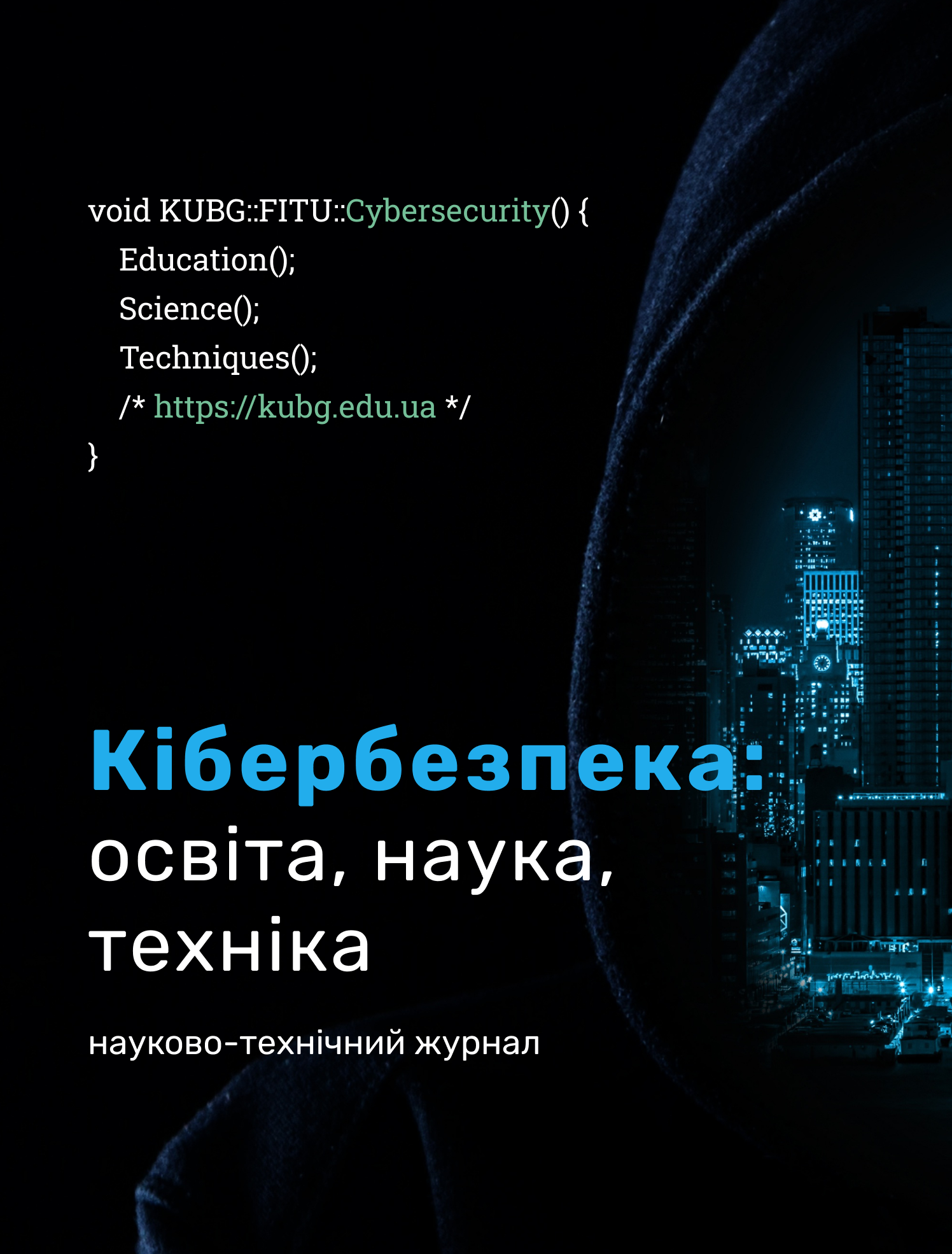EFFECTIVENESS OF BLOCKCHAIN LOGGING AND SSO IN CYBER SECURITY MECHANISMS
DOI:
https://doi.org/10.28925/2663-4023.2024.24.5068Keywords:
blockchain; cyber security; authentication; logging; decentralized identities; consensus technologies; NFT; cyber threats.Abstract
With the rise of cyber threats in the era of digital transformation, protecting information systems becomes crucial for ensuring data reliability and security. This is especially true for authentication and logging systems, which are key elements in identifying and countering unauthorized access. The use of identical credentials and traditional authentication methods opens up wide opportunities for cybercriminals. This article explores the use of blockchain technology as a means to combat cyber threats through the implementation of immutable, decentralized logging and authentication systems. Blockchain offers unique advantages, such as data immutability and distributed storage, which can significantly complicate unauthorized interference in security systems. Current trends in the field of cybersecurity are examined, particularly the challenges associated with data compromise and ineffective information exchange between systems. An important part of the article is the analysis of recent research focused on the capabilities of blockchain in the development of identification and authentication systems based on decentralized identifiers and the integration of consensus technologies. The main goal of the research is to identify and develop technological solutions aimed at enhancing the security, resilience, and efficiency of logging and authentication systems through the application of blockchain. Additionally, innovative approaches to identification and authentication that can strengthen protection against cyber threats are considered.
Downloads
References
Benjamin, N. (2021). How Effective Is Blockchain in Cybersecurity? Measurement: ISACA Journal, 4.
Moosavi, N., & Taherdoost, H. (2023). Blockchain Technology Application in Security: A Systematic Review. Blockchains, 1(2), 58–72. https://doi.org/10.3390/blockchains1020005
Mahmood, S., Chadhar, M., & Firmin, S. (2022). Cybersecurity Challenges in Blockchain Technology: A Scoping Review. Human Behavior and Emerging Technologies 2022, 1–11. https://doi.org/10.1155/2022/7384000
Zwitter, A. J., Gstrein, O. J., & Yap, E. (2020). Digital Identity and the Blockchain: Universal Identity Management and the Concept of the “Self-Sovereign” Individual. Front. Blockchain, 3. https://doi.org/10.3389/fbloc.2020.00026
Feng, Y., Zhong, Z., Sun, X., Wang, L., Lu, Y., & Zhu, Y. (2023). Blockchain enabled zero trust based authentication scheme for railway communication networks. Journal of Cloud Computing, 12. https://doi.org/10.1186/s13677-023-00411-z
Zheng, Z., Xie, S., Dai, H., Chen, X., & Wang, H. (2017). An overview of blockchain technology: Architecture, consensus, and future trends. IEEE International Congress on Big Data (BigData Congress), 557–564. https://doi.org/10.1109/BigDataCongress.2017.85
Özyılmaz, K. R., & Yurdakul, A. (2017). Designing a blockchain-based IoT infrastructure with erlang. IEEE Globecom Workshops (GC Wkshps). https://doi.org/10.1109/GLOCOMW.2017.8269080
Hu, P., Ning, H., Qiu, T., Song, H., Wang, Y., & Yao, X. (2019). Security and Privacy Preservation in Blockchain-Based Crowdsourcing Services. IEEE Network, 33(6), 180–186. https://doi.org/10.1109/MNET.001.1900015
Kshetri, N. (2017). Will blockchain emerge as a tool to break the poverty chain in the Global South? Third World Quarterly, 38(8), 1710–1732. https://doi.org/10.1080/01436597.2017.1298438
Casino, F., Dasaklis, T. K., & Patsakis, C. (2019). A systematic literature review of blockchain-based applications: Current status, classification and open issues. Telematics and Informatics, 36, 55–81. https://doi.org/10.1016/j.tele.2018.11.006
Hunt, T. (2017). LinkedIn Breach from 2012 Affected 700 Million Users.
Dunphy, P., & Petitcolas, F. A. P. (2018). A first look at identity management schemes on the blockchain. IEEE Security & Privacy, 16(4), 20–29.
Gatteschi, V., Lamberti, F., Demartini, C., Pranteda, C., & Santamaría, V. (2018). Blockchain and smart contracts for insurance: Is the technology mature enough? Future Internet, 10(2), 20.
Vujičić, D., Jagodić, D., & Ranđić, S. (2018). Blockchain technology, bitcoin, and ethereum: A brief overview. 17th International Symposium INFOTEH-JAHORINA (INFOTEH), 1–6.
Ezawa, Y. et al. (2019). Designing Authentication and Authorization System with Blockchain. 14th Asia Joint Conference on Information Security (AsiaJCIS), 111–118.
Ao, W., Fu, S., Zhang, C., Huang, Y., & Xia, F. (2019). A Secure Identity Authentication Scheme Based on Blockchain and Identity-based Cryptography. IEEE 2nd International Conference on Computer and Communication Engineering Technology (CCET), 90–95.
MultiChain | Enterprise blockchain platform. (n.d.). MultiChain | Enterprise blockchain platform. https://www.multichain.com/
Sultan, K., Ruhi, U., & Lakhani, R. (2018). Conceptualizing Blockchains: Characteristics and Applications. 11th IADIS International Conference on Information Systems, 49–57.
Poberezhnyk, V., Opirskyy, I. (2023). Developing of Blockchain Method in Message Interchange Systems. Workshop on Cybersecurity Providing in Information and Telecommunication Systems, Vol. 3421, 148–157.
Poberezhnyk, V., Balatska, V., Opirskyy, I. (2023). Development of the Learning Management System Concept based on Blockchain Technology. Workshop on Cybersecurity Providing in Information and Telecommunication Systems II, Vol. 3550, 143–156.
Published
How to Cite
Issue
Section
License
Copyright (c) 2024 Іван Опірський, Петро Петрів

This work is licensed under a Creative Commons Attribution-NonCommercial-ShareAlike 4.0 International License.




